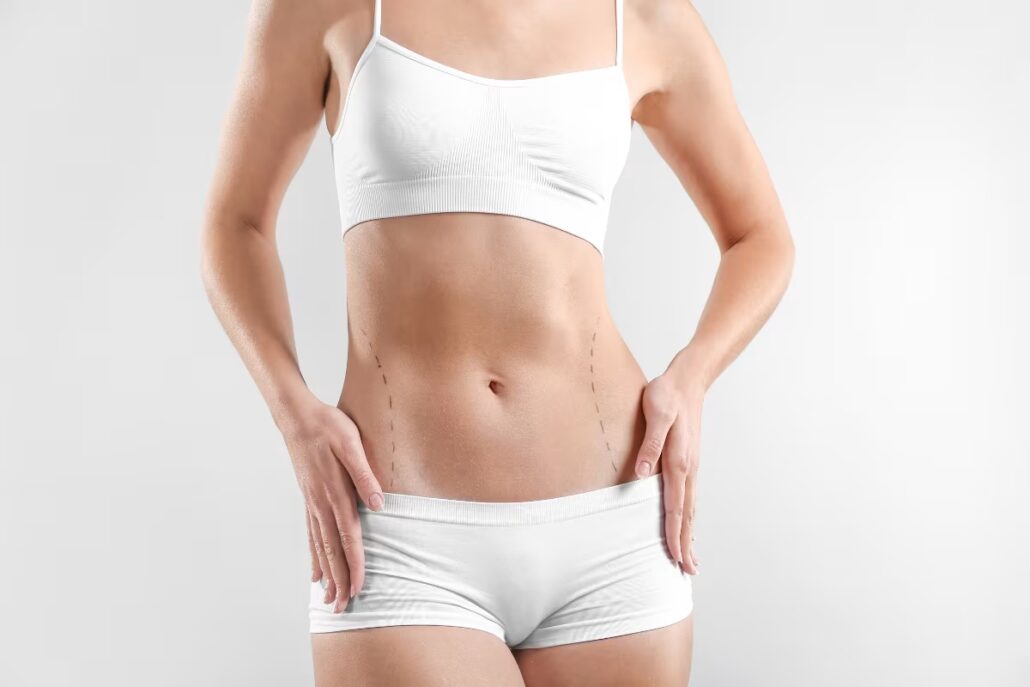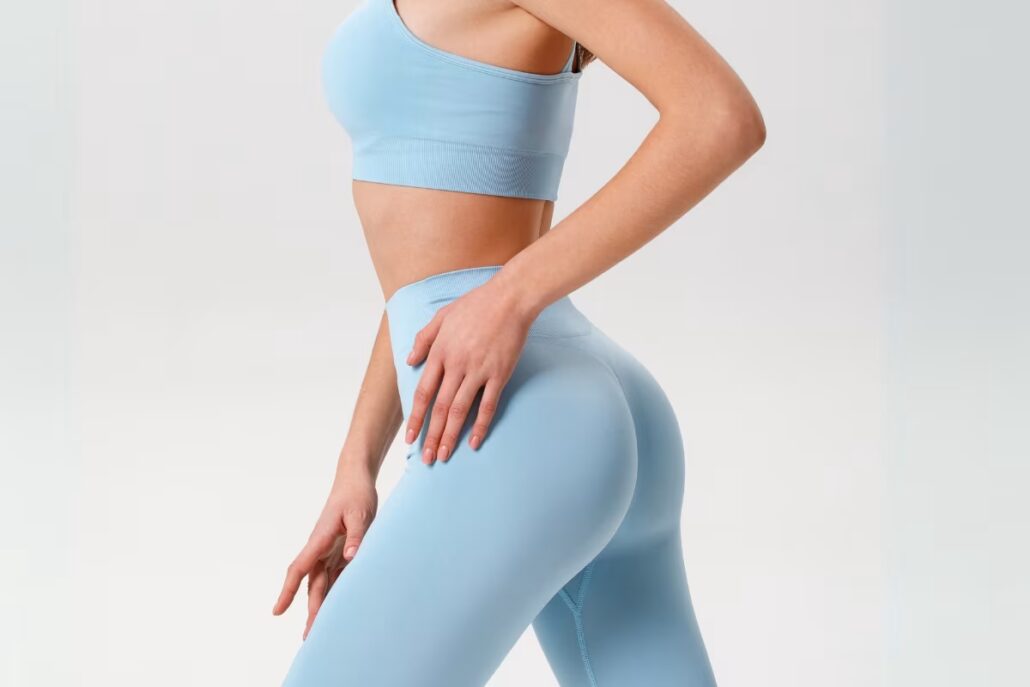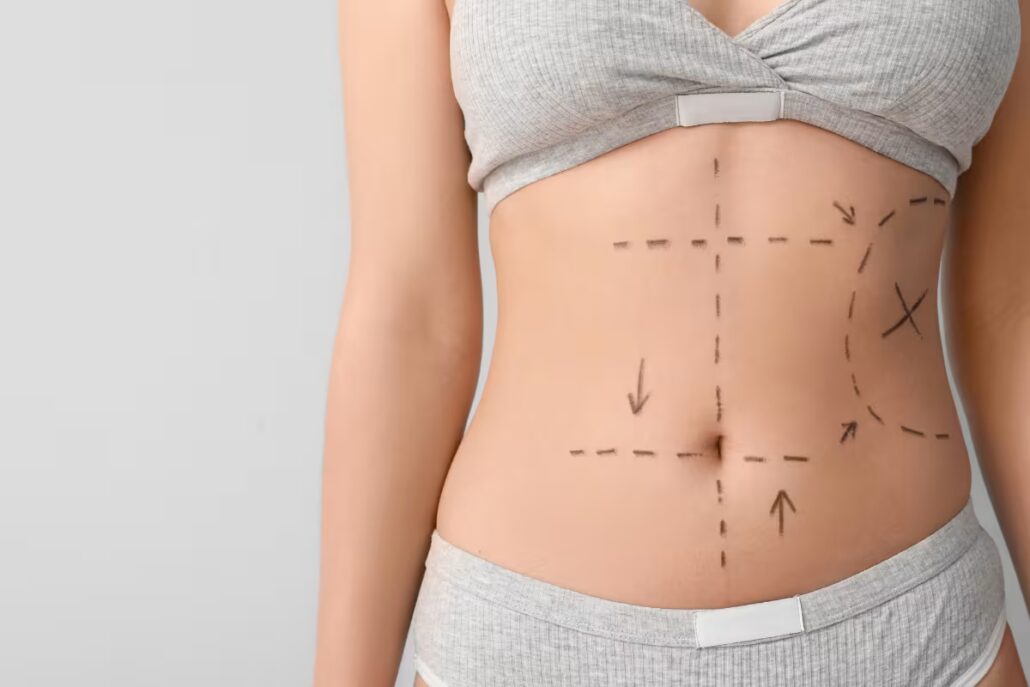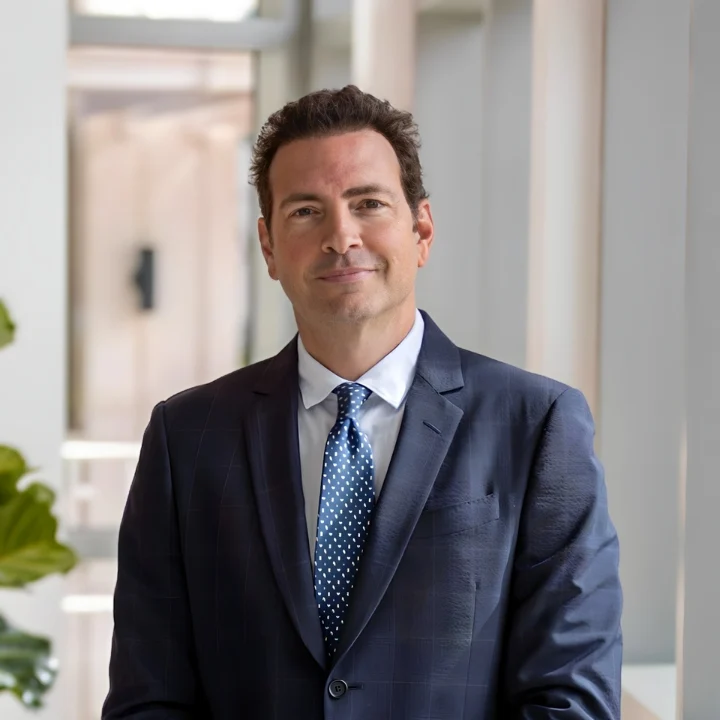Liposuction in Miami Beach, FL
Shape your dream body with Dr. Gabriel E. Salloum’s Liposuction in Miami Beach, FL. Our expert procedure targets stubborn fat, enhancing your natural contours for a slimmer, more confident you. As one of the top plastic surgeons for liposuction in Miami, Dr. Salloum is here to help—book your consultation today!
4.9(69)
Liposuction Benefits
Liposuction precisely removes stubborn fat, sculpting areas like the abdomen and thighs for a more defined look.
This procedure reshapes your body, enhancing natural contours and contributing to a slimmer, more attractive physique.
Reducing excess fat in areas like the thighs or underarms can enhance ease of movement and reduce chafing.
Through liposuction surgery, Miami Beach board-certified plastic surgeon Dr. Gabriel E. Salloum, M.D., F.A.C.S., can improve a patient’s body contours for improved confidence and self-esteem.
Eliminating stubborn fat can be difficult, even when you are trying your best. Factors such as age and genetics can affect how your body’s metabolism handles fat stores. While maintaining a healthy lifestyle can support good overall health and weight loss, it may not necessarily change your body’s shape. Liposuction can remove excess fat deposits from specific areas of the body, helping you achieve a slimmer appearance.

What is Liposuction?
Liposuction, also known as “lipo,” is a common cosmetic surgical procedure that removes isolated pockets of excess fat from the body. These “trouble spots” may be small, but they can significantly affect a person’s appearance and self-confidence. By removing these fat deposits, a plastic surgeon can help patients achieve their desired body shape and contour.
Cosmetic fat removal surgery is intended to improve the shape and contour of the body, but it cannot replace a healthy diet and exercise or weight loss surgery. If you want to lose a significant amount of weight, it is best to work with your primary care doctor to create a sustainable weight loss plan before considering body contouring surgery.


Ideal Candidates for Liposuction
Liposculpture is a procedure designed to slim specific areas of the body in patients who are slightly overweight or at their goal weight but still have stubborn pockets of fat. Good skin elasticity is important for the newly shaped areas to appear tight and smooth.
Liposculpture is commonly performed on the abdomen, back, buttocks, and thighs, but it can also be used to contour the face and neck. To be considered a good candidate for the procedure, patients should be in good health and have realistic expectations.
During a liposuction consultation in Miami Beach, FL, Dr. Salloum will assess an individual’s candidacy and create a personalized surgical plan taking into account your medical history. The Miami Center for Plastic Surgery provides a spa-like atmosphere and valet parking to make the experience convenient and comfortable for patients.
Liposuction Before and After Pictures
*All patients are unique and individual results may vary.




How is the Liposuction Procedure Performed
Fat removal surgeries are usually performed in a specialized medical facility or hospital. Before the procedure, Dr. Salloum will consult with the patient to discuss the surgical plan and may mark areas for fat extraction.
The patient will receive either general anesthesia or local anesthesia with sedation. If the tumescent technique is used, a solution is injected to firm and swell the targeted areas, reducing blood loss and trauma.
Dr. Salloum will then make a small incision to access the fatty layer. Using ultrasound-assisted liposuction (UAL), vibrations break down and liquefy the fat, which is then removed with a cannula.


What procedures can be combined with Liposuction?
The liposuction procedure can be performed on its own to sculpt different areas of the body, but it is often combined with other cosmetic surgery procedures for optimal aesthetic results.
Fat suctioning can be combined with skin-tightening techniques, or the fatty tissue can be transplanted to other areas of the face and body for augmentation. In some cases, a patient may be asked to gain weight before the procedure. One advantage of using a patient’s own fat is that it feels natural, is recognized by the body, and is readily available.
Surgical fat removal is often performed as part of the following cosmetic procedures:
Gynecomastia
Male breast growth, known as gynecomastia, is a condition caused by hormonal imbalances and can affect one or both sides of the chest. While some medications may reduce the size of male breasts, gynecomastia surgery is typically necessary to achieve a more masculine upper body shape. Liposuction may be combined with the removal of breast gland tissue for the most natural results.
Tummy Tuck
Abdominoplasty, commonly known as a tummy tuck, is a popular surgery often performed on women after one or more pregnancies. Pregnancy can stretch the skin beyond its capacity, cause the abdominal muscles to become permanently stretched or separated, and result in unwanted fat accumulation around the midsection.
During tummy tuck surgery, excess skin is removed, the muscles are sutured and tightened, and the surgeon can use liposuction techniques to remove fat for a slimmer abdomen.
Arm Lift and Thigh Lift
Many body lift procedures are performed after significant weight loss. When fat cells increase in size in areas such as the upper arms and thighs, the skin may also stretch. Rapid weight loss or weight loss surgery can lead to excess skin and displaced fat in these areas. During a Thigh Lift Miami or an arm lift, persistent fat can be removed using liposuction, and excess skin can be surgically removed.
Brazilian Butt Lift
Fat Transfer
Fat grafting is a method of injecting fat from another part of the body into the skin as an alternative to using cosmetic fillers. Fillers are artificial substances that are injected into the skin to restore volume.
During fat grafting, the donor fat is purified and injected into different areas of the face, such as under the eyes to address bags or hollows, in the nasolabial (“parenthesis”) creases around the mouth, or into the cheeks for contouring. One benefit of using autologous fat, or fat from the patient’s own body, is that it is recognized by the body and therefore will not be rejected or cause an allergic reaction.
Liposuction Techniques
Tumescent Liposuction
The most common type of liposuction involves injecting a series of fluids containing saltwater, lidocaine, and epinephrine into the treatment area. These injections help to reduce trauma, control bleeding, and minimize pain.
By expanding the site with the fluids, the fat becomes firmer and easier to remove. This method of liposuction requires less downtime, allowing patients to return to their normal activities sooner.
Assisted Liposuction Methods
Power-assisted liposuction (PAL)
Involves using a vibrating cannula to mechanically break down fat tissue, making it easier to remove with a vacuum. This technique is more commonly used in patients who require large-volume fat removal surgery.
Ultrasound-assisted liposuction (UAL)
Is often combined with tumescent fat removal for enhanced results. The plastic surgeon first injects a tumescent solution into the fatty layer. Then, they use a specialized device to deliver ultrasonic energy beneath the skin. This breaks down the walls of the fat cells, making them easier to remove.
Another type of fat removal surgery is laser-assisted liposuction (LAL), which uses light energy to break down adipose tissue. The fat becomes emulsified and can be easily removed from the body using a cannula.


How is the Recovery from Liposuction Surgery?
Liposuction is typically performed as an outpatient procedure, so patients can go home soon after the surgery is complete. However, they must be driven home by a friend or family member.
After the procedure, patients will be fitted with a compression garment to support their new body shape, reduce swelling, and increase flow in the blood vessels at the surgical site. Some bruising and swelling is normal and will subside over a couple of weeks.
The amount of time it takes for patients to return to their normal activities after liposuction can vary depending on the size of the treatment area. In general, patients can expect to return to normal life within 3 to 14 days, although it may take up to a month before they are approved for more strenuous activities. Regular movement and normal activity are generally encouraged.
In some cases, it may take up to six months for the sculpted areas to fully settle. To support the liposuction recovery time, patients may be provided with additional compression garments to wear as needed. A complete liposuction results week by week guide is detailed for more information of the final outcome.
The Liposuction Risks
Is liposuction safe? If you’re considering liposuction surgery, there are some risks involved. Liposuction is not a completely risk-free procedure. A number of potential complications can occur, including infection, bleeding, nerve damage, scarring, and in rare cases, death. It is important for patients to carefully consider the potential liposuction risks and benefits and to discuss them with their plastic surgeon before making a decision.
Here are some tips to help reduce the chances of complications after liposuction:
• Make sure to take antibiotics before surgery. This can reduce the risk of infection.
• Refrain from drinking alcohol at least 24 hours prior to surgery. Since alcohol elevates blood pressure and heart rate, it becomes more challenging to administer anesthesia.
• Follow the doctor’s instructions for taking pain medications. Pain medications help relieve muscle tension and lessen discomfort.
• Stay up to date with your surgeon’s appointments. Setting up regular visits with your liposuction surgeon decreases the risk of complications.
Why Should I Choose Dr. Gabriel Salloum?
- Dr. Salloum is board-certified by the American Board of Plastic Surgery and the American Board of Surgery.
- He has over 18 years of experience in plastic surgery, providing natural-looking cosmetic results.
- Dr. Salloum completed his general surgery residency at Mount Sinai Medical Center in Miami, serving as Chief Surgical Resident.
- He completed the Hand Surgery Fellowship Program at the University of Virginia Medical Center and is one of the few fellowship-trained reconstructive hand surgery specialists in South Florida.
- Dr. Salloum completed the Plastic Surgery Program at the University of Texas at Houston, with extensive training in cosmetic surgery.
- He has received numerous 4.5 and 5-star reviews on Yelp, Healthgrades, Vitals, RealSelf, and Google, with a consistent track record of successful results and satisfied patients.
- Dr. Salloum is passionate about helping patients meet their cosmetic goals and gain confidence, taking the time to understand each patient and answer questions before creating a unique surgical plan.
- Dr. Salloum offers a full range of plastic surgical procedures, including facelifts, body contouring, liposuction, tummy tucks, thigh lifts, Brazilian butt lifts, and breast reconstruction, specializing in reconstructive surgery, ultrasound-assisted liposuction, facial restructuring, and body contouring.
- Named a NYT and Miami Best Doctor.

Frequently Asked Questions about Liposuction
What is the Liposuction cost in Miami Beach, Florida?
Many Miami-based plastic surgery centers charge around $3,000 for lipo treatments. Liposuction prices can fluctuate based on the needed treatment area, the quantity of fat layer to be taken out, and other methods or procedures that will be performed in conjunction with volumes of fat elimination. After meeting with Dr. Salloum during the consultation process, he will join forces with the Miami Center for Plastic Surgery’s billing staff to determine a patient’s full cost of services.
Am I a good candidate for liposuction?
Ideal candidates are individuals who are close to their ideal body weight but have stubborn fat pockets that don't respond to diet and exercise. Good skin elasticity is important for achieving smooth results. Liposuction is not a weight-loss solution or treatment for obesity.
Does liposuction help a person lose weight?
Liposculpture isn’t a means of losing weight; its intention is to shape the body. Removing excessive fat has an established limit regarding how much tissue can be eliminated in one hour. Those who are considering lipo are generally at a healthy weight or slightly overweight. Consuming healthy foods and doing routine physical activities will help avoid gaining more weight after going through the operation.
Does fat removal surgery treat cellulite and stretch marks?
Cellulite is caused primarily by a person’s anatomy and affects the majority of women. It is less common in men. Despite excess fat contributing to the appearance of cellulite, liposuction will not help with this condition and may not make the look of the skin any better.
Stretch marks are scars caused by skin stretching beyond its capacity. They usually fade but remain permanent. Vacuuming fat out of the impacted skin doesn’t erase stretch marks, but it may reduce their visibility if the elasticity returns to normal.
At the Medical Spa of the Miami Center for Plastic Surgery, there are improved cosmetic procedures to assist with managing cellulite and stretch marks. An outpatient process that offers no invasive techniques, known as Velashape, utilizes radiofrequency energy in addition to infrared light to lessen fat cells and contract skin. Dr. Salloum can make the treated area taut up to 3 inches, potentially decreasing the look of cellulite. Moreover, CO2 laser skin resurfacing may be done to minimize the appearance of stretch marks with minimal healing time and jumpstart collagen production – a potential aid in making cellulite seem less visible beneath the surface.
What liposuction office is near me?
If you live near Miami Beach, FL, Miami Center For Plastic Surgery offers liposuction among its services, and is conveniently located at 4308 Alton Road #720 Miami Beach, FL 33140.
